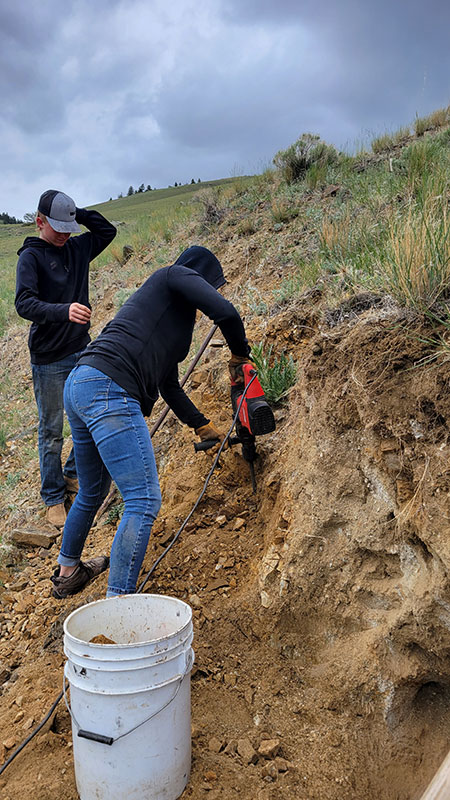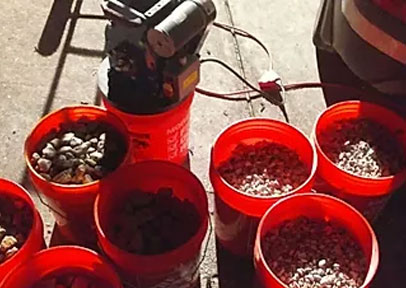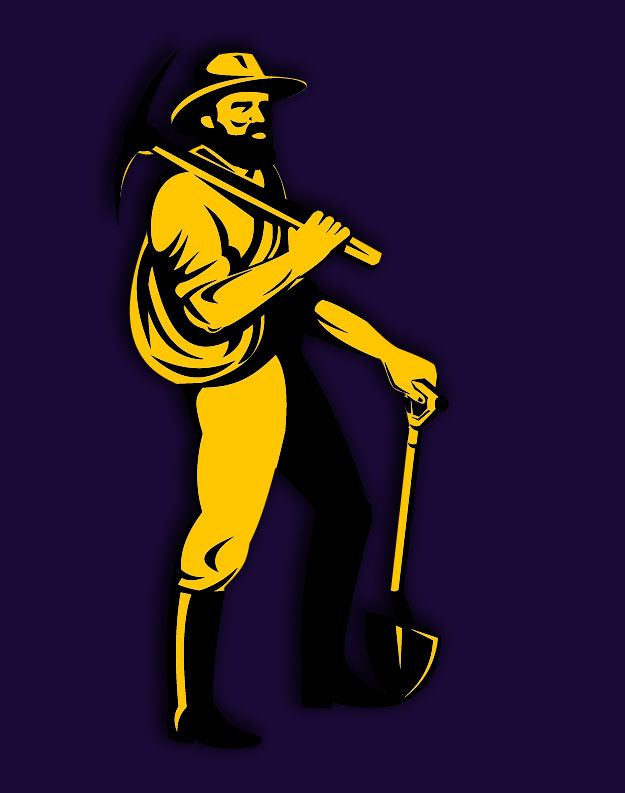Hard Rock Gold Mining Equipment
Definition and Significance of Hard Rock Gold Mining
Hard rock gold mining is a method that involves extracting gold from underground deposits of solid rock, rather than from alluvial deposits (sediments in rivers, streams, or other water bodies). This type of mining requires specialized hard rock gold mining equipment and techniques to access the valuable mineral resources hidden deep within the Earth’s crust. Unlike placer mining, which relies on the natural erosion process to wash away gold particles from rocks and soil, hard rock mining involves physically breaking down the rocks and extracting the precious metal.
(sediments in rivers, streams, or other water bodies). This type of mining requires specialized hard rock gold mining equipment and techniques to access the valuable mineral resources hidden deep within the Earth’s crust. Unlike placer mining, which relies on the natural erosion process to wash away gold particles from rocks and soil, hard rock mining involves physically breaking down the rocks and extracting the precious metal.
The significance of hard rock gold mining lies in its ability to access veins or lodes of gold that are embedded in solid rock formations. These veins can be narrow and challenging to locate, but they often contain high-grade concentrations of gold.
Unlike placer deposits, which can be relatively easier to find but may have lower purity levels, hard rock mines offer the potential for higher yields of pure gold. Additionally, hard rock mining contributes significantly to local economies by creating jobs and providing a sustainable source of valuable minerals.
Overview of the Equipment Used in This Type of Mining
Hard rock gold mining requires a range of specialized equipment that is designed to withstand harsh underground conditions while effectively extracting gold from solid rock formations. The primary equipment used in this type of mining includes crushers and pulverizers for breaking down rocks into smaller particles suitable for further processing.
Jaw crushers are commonly used in hard rock mines as they can efficiently break down large rocks into smaller sizes. They operate by using a fixed jaw plate and a moving jaw plate that applies pressure on the material until it breaks apart.
Another essential piece of equipment used in hard rock gold mining is impact crushers. These machines use high-speed impact forces to crush rocks against anvils or breaker plates.
They are particularly useful for reducing large chunks into smaller, more manageable sizes. Grinding mills are also vital in the hard rock gold mining process.
After the initial crushing, the crushed ore is further reduced into fine powder through grinding. Ball mills are rotating drums that contain steel balls, which grind the ore particles to achieve the desired size.
On the other hand, rod mills use long rods to efficiently grind down the ore into smaller particles. By utilizing this range of equipment, hard rock gold miners can effectively extract valuable minerals from solid rock formations, leading to increased yields and profitability.
Primary Hard Rock Gold Mining Equipment
Crushers and Pulverizers: Crushing Rocks into Smaller Particles
 When it comes to hard rock gold mining, the first step is to crush the rocks into smaller particles that can be processed further. This is where crushers and pulverizers come into play.
When it comes to hard rock gold mining, the first step is to crush the rocks into smaller particles that can be processed further. This is where crushers and pulverizers come into play.
These machines are designed to break down rocks of varying sizes, making it easier to extract the valuable gold within. One type of crusher commonly used in hard rock gold mining is the jaw crusher.
This mighty machine uses a set of jaws to exert pressure on rocks, breaking them down into smaller pieces. It’s a highly efficient method that has been used for centuries, and it continues to be a reliable option in modern mining operations.
Another popular choice in crushing rocks is the impact crusher. This machine operates by using high-speed impact forces to shatter the rocks into smaller fragments.
It relies on a rotating rotor with metal hammers or blow bars that strike the rocks with great force. The impact causes the rocks to break apart, creating even smaller particles that can be further processed.
Grinding Mills: Reducing Crushed Ore into Fine Powder
Once the ore has been crushed into smaller particles, it needs to be further reduced into fine powder before any extraction process can take place. Grinding mills are essential equipment for this purpose as they efficiently grind down crushed ore using various mechanisms. One type of grinding mill commonly used in hard rock gold mining is the ball mill.
This cylindrical device rotates around its axis and uses steel balls or other grinding media to pulverize the ore inside it. The rotation of the drum causes these balls to cascade and grind down the ore particles, resulting in a fine powder ready for extraction.
Another option for grinding crushed ore is using rod mills. These mills use long steel rods instead of balls as grinding media.
As the rods rotate within the mill, they break down the ore by both impact and attrition. The larger particles are efficiently reduced in size, allowing for the extraction of gold from the finely ground powder.
Crushers and pulverizers play a crucial role in hard rock gold mining by breaking down large rocks into smaller particles. This prepares the ore for further processing.
Grinding mills, such as ball mills and rod mills, then reduce the crushed ore into fine powder. These primary equipment components work seamlessly together to facilitate the extraction of gold from hard rock deposits.
Secondary Hard Rock Gold Mining Equipment
Concentrators: Separating Valuable Minerals from Gangue Material
Did you know that extracting gold from hard rock ore involves separating the valuable minerals from the unwanted gangue material? This is where concentrators come into play. Concentrators are specialized equipment designed to efficiently separate heavy minerals like gold from the surrounding rock or debris.
There are different types of concentrators used in hard rock gold mining, each employing distinct techniques for separation. One commonly used concentrator is a shaking table.
As the name suggests, this equipment utilizes gravity to separate heavy minerals. The table is set in motion, causing riffles on its surface to create stratification.
Heavy particles settle at the bottom while lighter gangue materials wash away, leaving behind the sought-after gold particles. Shaking tables are highly effective in separating fine-grained gold and are particularly useful when dealing with low-grade ores.
Centrifugal Concentrators: Spinning Motion for Efficient Separation
Another type of concentrator extensively used in hard rock gold mining is the centrifugal concentrator. Unlike shaking tables that rely on gravity alone, centrifugal concentrators employ a spinning motion to achieve efficient separation of heavy minerals.
These machines use centrifugal force generated by rotating drums to accelerate particles outward against a screen or lining, allowing denser materials like gold to settle while lighter gangue material is expelled through an overflow outlet. Centrifugal concentrators offer several advantages over other methods of concentration, including high recovery rates and low operating costs.
They are especially effective in recovering fine-sized particles and can be customized with different rotor configurations depending on the specific ore characteristics being processed. With their ability to handle large volumes of material quickly and efficiently, these concentrators have become indispensable tools in modern hard rock gold mining operations.
Flotation Cells: Extracting Gold through Froth Flotation Process
When it comes to extracting gold from hard rock ore, flotation cells play a vital role. The froth flotation process relies on the selective attachment of air bubbles to hydrophobic particles, enabling the separation of valuable minerals, such as gold, from the surrounding gangue material. This process involves three main steps: conditioning the ore with chemicals called collectors and frothers, creating a mineral-laden froth on top of the pulp, and collecting the concentrated gold-rich froth.
Frothers and collectors are essential additives used in flotation cells to facilitate mineral separation. Frothers create stable foam or froth that helps carry away hydrophobic particles while collectors selectively bind to target minerals, making them attach to air bubbles during the flotation process.
Additionally, agitators and air blowers provide optimal conditions for successful flotation by ensuring thorough mixing of chemicals and creating aeration in the pulp. The use of flotation cells in hard rock gold mining has proven to be highly efficient and cost-effective.
It allows for the recovery of even minute amounts of gold from complex ores with varying mineralogical compositions. As technology continues to advance, researchers are constantly exploring new methods and refining existing ones to optimize this crucial step in extracting precious metals from hard rock deposits.
Specialized Hard Rock Gold Mining Equipment
Underground drilling rigs: Extracting gold from deep underground mines
Deep underground mining requires specialized equipment capable of extracting gold from the depths of the earth. Underground drilling rigs play a vital role in this process, enabling miners to access valuable ore deposits hidden beneath layers of solid rock. These rugged machines are designed to withstand immense pressure and harsh conditions found in underground mines.
Diamond core drilling machines: Penetrating hard rock formations
When it comes to penetrating hard rock formations, diamond core drilling machines prove their worth as indispensable tools for hard rock gold mining. Equipped with diamond-tipped drill bits, these powerful machines cut through solid rock by continuously rotating and grinding at high speeds. The diamond-infused bits provide exceptional durability and cutting efficiency, ensuring that even the toughest geological formations can be penetrated.
Rotary drilling rigs: Efficiently drilling large diameter holes
Efficiency is crucial in hard rock gold mining, especially when drilling large diameter holes. Rotary drilling rigs excel in this regard by utilizing a rotating drill bit that applies downward pressure while simultaneously removing debris through a hollow drill pipe. This efficient process allows for rapid and precise hole creation in hard rock, reducing both time and costs associated with exploration and extraction efforts.
Tunnel boring machines (TBMs): Excavating tunnels in hard rock mines
In the quest to reach deeper gold deposits within hard rock mines efficiently, tunnel boring machines (TBMs) take center stage. These colossal machines are marvels of engineering that excavate tunnels through solid rock using advanced cutting mechanisms like the cutter head. The shield protects workers while also providing stability during excavation, while a conveyor system removes excavated material from the tunnel site.
Main components of TBMs: Cutter head, shield, conveyor system
The cutter head is a vital component of a TBM, consisting of rotating discs or picks that tear through rock. It’s designed to withstand immense pressure while efficiently breaking down and removing rock fragments.
The shield, on the other hand, provides much-needed protection for workers by surrounding the TBM and creating a safe working environment. The conveyor system efficiently transports excavated material away from the TBM, ensuring continuous progress in tunnel excavation.
Types of TBMs: Open face TBM, Double shield T
Two common types of TBMs used in hard rock gold mining are the open-face TBM and the double shield TBM. The open-face TBM features a large cutting wheel at its front supported by thrust cylinders to push against the tunnel walls.
As it advances, segments are installed behind it to maintain stability. In contrast, the double shield TBM incorporates both forward and rear shields to provide additional protection and stability during excavation.
Conclusion
Mining for hard rock gold necessitates specialized equipment capable of conquering challenging geological conditions deep within the earth’s crust. Underground drilling rigs enable access to precious ore deposits hidden beneath solid rock formations. Meanwhile, diamond core drilling machines prove invaluable in penetrating even the toughest geological obstacles encountered during exploration and extraction efforts.
Rotary drilling rigs excel in efficiently drilling large diameter holes with precision and speed. Tunnel boring machines stand as engineering marvels that excavate tunnels through solid rock using advanced cutting mechanisms like cutter heads while providing safety measures with shields and efficient debris removal through conveyor systems.
Through these impressive technological advancements in hard rock gold mining equipment, miners can navigate challenging terrain more efficiently than ever before. As we continue to innovate and refine our methodologies for extracting precious resources from within Mother Earth’s rocky embrace, we pave the way for sustainable mining practices that ensure both environmental responsibility and economic prosperity for future generations.
